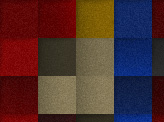A good product might sell once. A good story? That’s what keeps customers coming back. In a competitive market, packaging design has evolved far beyond function and shelf appeal—it’s now one of the most powerful tools for storytelling a brand has.
Every element of packaging, from the materials to the typography, plays a role in shaping how a brand is perceived. It’s not just about what looks good. It’s about what feels right—what feels true. And that sense of truth, when thoughtfully communicated, is what turns everyday consumers into loyal advocates.
For designers and artists alike, finding daily creative inspiration is essential to developing a unique and powerful voice.
Why Storytelling Matters in Packaging
Think about the last time you picked up a product in-store or clicked on one online without having tried it before. What made you pause? Most likely, it wasn’t just a pretty label—it was something that felt familiar, intriguing, or aligned with your values. That’s the work of good storytelling.
Food and beverage brands, in particular, have the unique challenge of appealing to both emotion and appetite. A customer might be drawn to your product because it looks healthy, nostalgic, premium, or exciting. But beneath that attraction is something deeper: a sense of connection.
When packaging captures a brand’s origin, values, or promise in a clear and emotionally resonant way, it builds trust—often before a word is spoken or a bite is taken.
Building the Story From the Ground Up
Story-driven packaging isn’t about slapping a slogan on the front or writing a heartfelt paragraph on the back. It starts with clarity around your brand’s narrative. What’s your purpose? What do you stand for? Who are you trying to speak to?
From there, storytelling comes to life through:
- Visual cues: Color palettes, illustration styles, and photography all influence how a brand is perceived. Earthy tones might convey sustainability, while vibrant colors suggest energy and playfulness.
- Typography and tone: The way words are styled and written matters. A handwritten font can feel artisanal. Bold, clean lettering might suggest professionalism or health-focused values.
- Material and form: The choice of packaging materials—from compostable wraps to glass jars—tells a story about what a brand values. Is it eco-conscious? Premium? Practical?
- Structure and usability: Even the way a product opens, stacks, or reseals can add to the narrative, especially in food products where function meets daily use.
Creating a Consistent Brand Experience
A key part of effective packaging design is consistency. The story you tell on the shelf should echo what’s on your website, in your social media captions, and in every customer touchpoint. When everything aligns, it builds brand recognition and trust.
This consistency doesn’t mean every design needs to look identical—it means every part of your brand should feel like it belongs to the same world. A snack brand focused on nostalgic comfort might carry that mood through retro packaging design, storytelling copy, and warm color schemes. A premium health drink, on the other hand, might use minimalist design, clean fonts, and scientific language to express purity and innovation.
When that consistency is achieved, the brand doesn’t just speak—it becomes unmistakably familiar.
Adapting Storytelling for Different Audiences
A smart packaging strategy also considers how different audiences might engage with your product. Are you speaking to health-conscious parents? Gen Z snackers? Busy professionals? Each group responds to different visual languages and values.
Storytelling can also shift depending on the environment—retail shelf, ecommerce store, farmers market. Online, for example, the packaging has to tell the story instantly, sometimes only through a thumbnail image. This is where strategic decisions around bold colors, iconography, and product cues make a big difference.
When developing packaging design, especially for multi-channel or international brands, it’s important to build flexible systems that allow your core story to be adapted without losing integrity.
Collaborating with the Right Creative Partners
While many brands have a great product and a strong mission, translating that into packaging requires both creativity and strategy. Working with a team that understands how to balance story, function, and shelf presence can make all the difference.
If you’re based locally, there are creative studios specializing in packaging design Sydney that offer this balance—bringing together market insight, storytelling experience, and visual innovation. Collaborating with people who truly understand your audience and the local retail landscape helps elevate the story you’re trying to tell.
Final Thoughts
Packaging is more than a container—it’s a conversation. It tells people who you are, what you believe, and why your product deserves a place in their lives. In crowded markets and fast-moving retail environments, storytelling through design isn’t a luxury—it’s a necessity.
When your packaging reflects your brand’s essence with clarity and purpose, you’re not just designing to be seen—you’re designing to be remembered.












